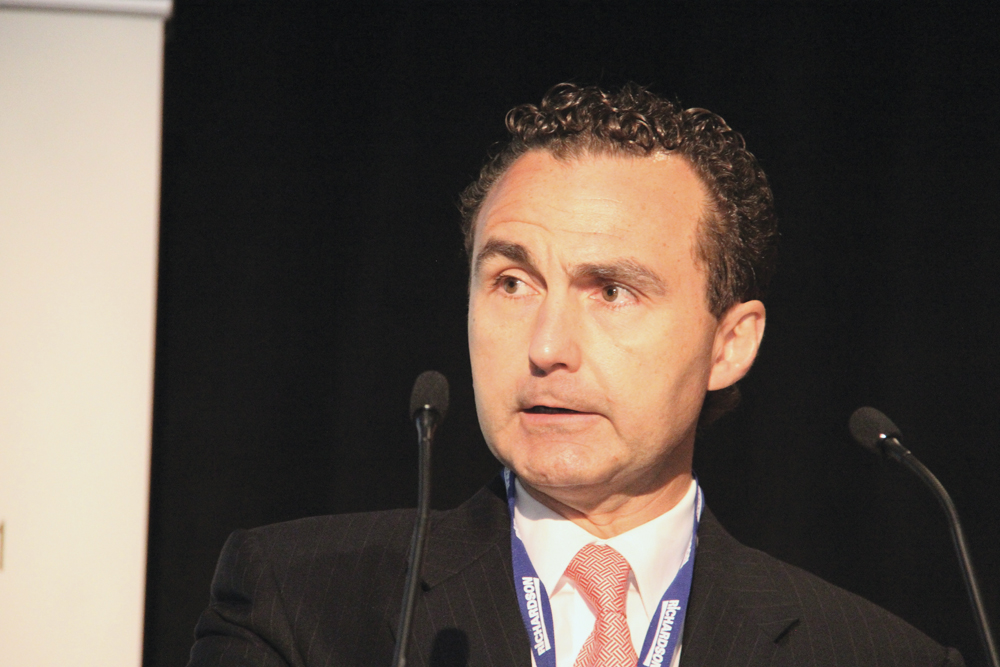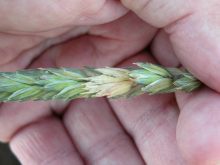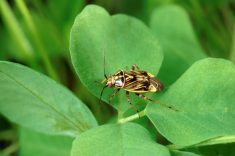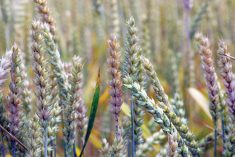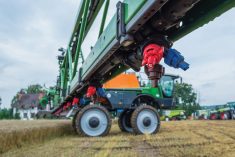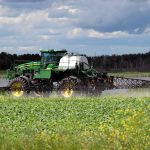If you want some idea of how quickly digital agriculture could grow, take a look at what happened with GM crops.
Monsanto never expected genetically modified crops to catch on as quickly as they did and one company insider says the same explosive growth could happen with data-driven farming.
Instead of a measured and evolutionary adoption, what actually happened with biotech was more like a revolution, said Jesus Madrazo, Monsanto’s vice-president of global corporate engagement on the sidelines of the Canadian Global Crops Symposium in Winnipeg April 12.
Read Also

CUSMA access key among other trade noise: Seeds Canada panel
Seeds Canada conference panelists say Canada needs to stay focused and wait as U.S. trade and tariff chaos develops, and a Canada-U.S.-Mexico Agreement review looms
It surpassed even the most optimistic expectations of his colleagues.
“In their wildest dreams they never expected it to be embraced at such a pace by farmers,” Madrazo said. “They thought it was going to be a gradual process. But what really happened was it just skyrocketed.”
The company learned through that process new technology adoption is not a gradual process, and that’s something that could happen again as farmers size up new data-driven farming methodology, he said.
“I think when we look at data science and digital agriculture we are going to see exactly the same thing,” he said.
Monsanto commercialized the first glyphosate-tolerant GM canola in 1998. Farmers quickly switched because they saw value in the new technology, Madrazo said. It made controlling weeds in canola simpler and less expensive, although the advent of resistant weeds now threatens some of those gains.
Recently, volunteer glyphosate-resistant canola has been a problem for some Manitoba farmers, and glyphosate-resistant weeds are a growing issue throughout North America.
Digital agriculture, also referred to as big data and precision farming, uses an array of technology from satellite imagery and geo-referenced soil test and yield maps to real-time weather monitoring and soil sensors and powerful computer programs to micromanage crop production.
“We are in the process of developing the products, trying the products on the farm, making sure the farmers get familiarized, but the moment farmers start using and seeing the benefit it is just going to exponentially grow,” Madrazo said. “Then the challenges is how fast we can go to meet that demand.”
Digital farming could catch on faster than biotech crops because there are no regulatory hurdles, he added.
“And most everyone in the world already has access to a smartphone or iPad,” Madrazo said. “So the vehicle to deliver this is there.
“This is not going to be limited to one crop or the other. This is crop agnostic and brand agnostic.”
Monsanto, which started off as a chemical company and evolved into a GM seed company, is already in digital agriculture. Two years ago, it paid $1 billion for Climate Corp., a firm that specializes in digitizing and aggregating a long list of data collected from farmers’ fields.
“Today we can help a farmer track every field down to the square metre with relative location-specific data,” Madrazo said. “This helps the farmer know exactly what decisions to make — what to plant, where to plant, what space to use, when to use pesticides, when to use nutrients, all of that data practically per square metre.”
That can translate into much more precise use of inputs.
“Today advice on nitrogen relies on proper rotation and soil sampling,” Madrazo said during his formal remarks to the symposium. “Tomorrow our nitrogen advisory tools will optimize applications with real-time satellite imaging of that field reducing the environmental footprint.”
That’s also just the start, in Madrazo’s opinion.
“I think the best is to come,” he said. “It will accelerate the next green revolution in agriculture.”
Producing more food with fewer inputs is what it will take to boost global food production 70 per cent by 2050, to feed an estimated nine billion people — about two billion more than there are today — and protect the environment, he said.
If that weren’t enough, Monsanto’s scientists have determined climate change is real.
“Our world is getting drier,” Madrazo said. “Our world is getting warmer. The weather patterns we are experiencing in agriculture are shifting. I would say agriculture is probably the industry that is most impacted by this phenomenon.”
Agriculture, the second-largest emitter of greenhouse gases, contributes to global warming, but it can be part of the solution, he said.
Monsanto has pledged to be carbon neutral by 2021, Madrazo said. And what the company learns will be shared with farmers to make agriculture part of the climate change solution. Techniques include planting cover crops, higher-yielding varieties and improved agronomics through digital agriculture. Every corn plant is like a small tree sucking in and storing carbon dioxide, Madrazo said, adding that agriculture could be the sector with the potential of having the single largest impact on addressing climate change.
“But we (Monsanto) need to start in our own backyard and set an example in collaborating with others,” he said.






